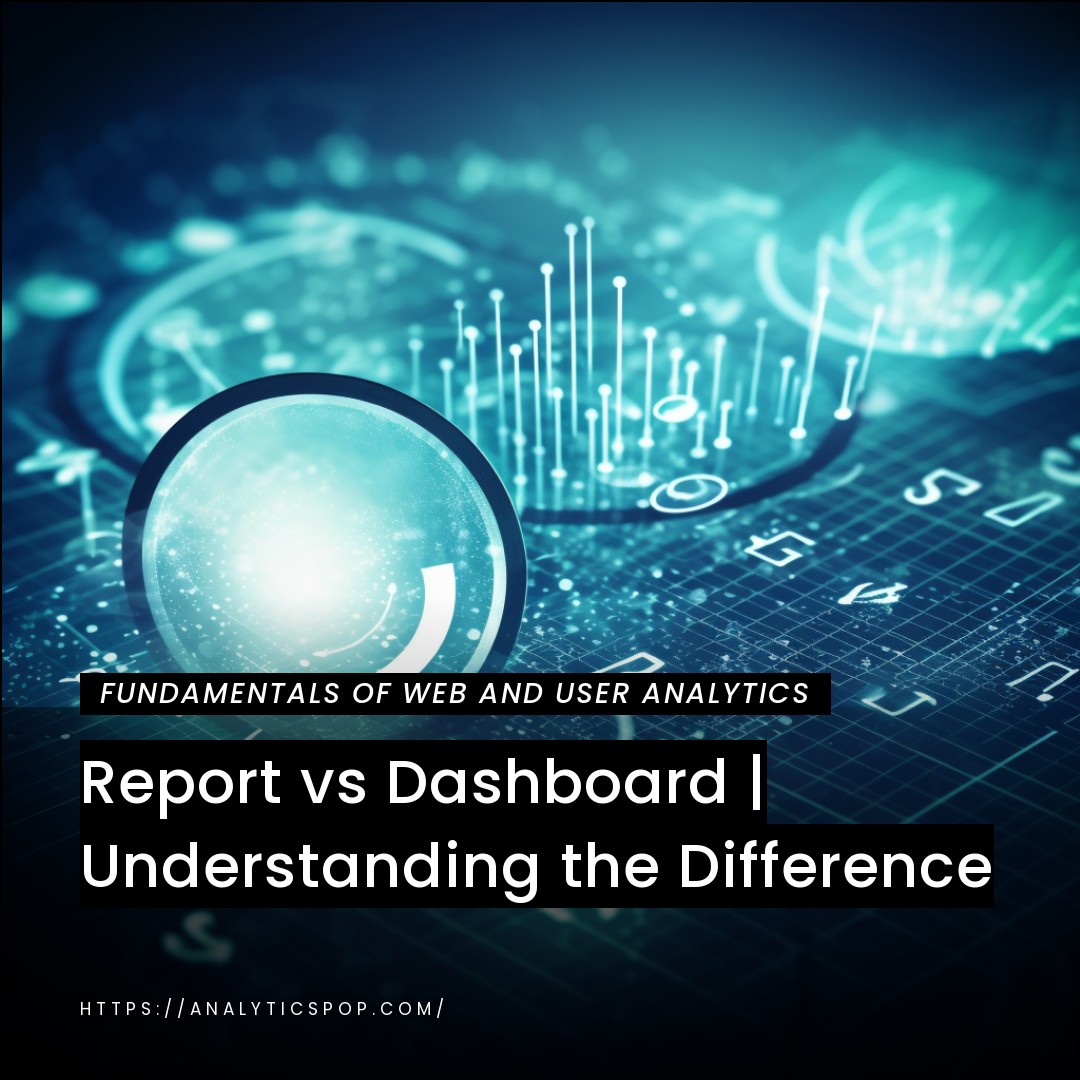Interaction analytics is a powerful tool for businesses aiming to enhance customer satisfaction. Companies gain valuable insights into customer preferences, pain points, and expectations by analyzing customer interactions across various channels, such as phone calls, emails, and social media. This data-driven approach enables organizations to identify areas of improvement and make data-backed decisions to optimize customer experiences.
Statistics reveal the significance of interaction analytics in customer satisfaction. According to a recent study, businesses that utilize interaction analytics witness a 10% increase in customer satisfaction scores. By leveraging sentiment analysis, companies can gauge customer emotions during interactions, allowing them to address concerns promptly and improve overall satisfaction rates.
Let’s consider an example to illustrate the impact of interaction analytics. A telecommunications company discovered through interaction analytics that many customers were contacting their customer support regarding slow internet speeds during peak hours. Armed with this insight, the company optimized its network infrastructure and rolled out capacity upgrades, resulting in a 20% reduction in customer complaints and an improved average speed during peak times.
Interaction analytics plays a vital role in elevating customer satisfaction. By harnessing the power of data analysis, businesses can make informed decisions, address customer pain points, and enhance overall customer experiences. Integrating interaction analytics into customer service strategies enables organizations to stay ahead of the competition and foster long-term customer loyalty.
The significance of customer experience in today's business landscape
In today’s highly competitive business landscape, customer experience (CX) has become a critical differentiator and a key driver of success. A seamless and positive customer experience can build strong relationships, foster loyalty, and drive business growth.
Statistics highlight the significance of customer experience. According to a recent survey, 86% of customers are willing to pay more for a better experience. Additionally, 73% of consumers state that a good experience is crucial to brand loyalty. These numbers demonstrate that investing in customer experience is a luxury and a necessity for businesses.
A compelling example of the impact of customer experience is seen in the retail sector. Studies show that 84% of customers are more likely to choose a retailer based on the quality of their customer experience. Retailers prioritizing CX by offering personalized recommendations, easy navigation, and efficient customer service tend to outperform their competitors regarding sales and customer retention.
Moreover, positive customer experiences lead to valuable word-of-mouth recommendations. Research indicates that 77% of customers will likely recommend a brand to others after a positive experience. This organic promotion can significantly boost brand visibility and attract new customers.
To excel in customer experience, businesses leverage AI-powered chatbots, personalized marketing campaigns, and data analytics to understand customer preferences and tailor their offerings accordingly. Companies can ensure consistent and exceptional experiences throughout the customer journey by continuously monitoring and optimizing customer touchpoints.
Customer experience has become a key driver of success in today’s business landscape. Businesses can attract and retain customers and gain a competitive edge by prioritizing and investing in CX. With the ability to increase customer loyalty, drive positive recommendations, and ultimately boost revenue, a customer-centric approach is essential for sustainable growth in the modern business world.

What is Interaction analytics and its Impact on customer experience?
Interaction analytics analyzes customer interactions across various channels, such as phone calls, emails, chats, and social media, to gain valuable insights into customer behavior, preferences, and sentiments. This data-driven approach significantly impacts customer experience (CX) by providing actionable insights that help businesses enhance customer satisfaction and loyalty.
- One of the primary benefits of interaction analytics is its ability to uncover customer pain points and identify areas for improvement. Businesses can identify recurring issues by analyzing customer interactions, understanding customer frustrations, and taking proactive steps to address them. This leads to quicker problem resolution, reduced customer effort, and improved CX.
- Interaction analytics also enables businesses to measure and monitor key performance indicators (KPIs) related to customer experience. By analyzing metrics such as average handling time, first contact resolution, and customer sentiment, organizations can track their performance and make data-backed decisions to optimize CX strategies. For example, if the analytics reveal high customer complaints regarding a specific product feature, the company can prioritize improvements or provide targeted training to customer support teams.
- Moreover, interaction analytics helps in personalizing customer experiences. Businesses can gather valuable insights to offer personalized recommendations, targeted promotions, and tailored experiences by analyzing customer interactions and preferences. This level of personalization enhances customer engagement and fosters a deeper connection with the brand, leading to increased customer loyalty.
- Another significant impact of interaction analytics on CX is its role in predicting customer behavior and preferences. By leveraging data from customer interactions, businesses can identify patterns and trends, anticipate customer needs, and proactively offer relevant solutions. For instance, if a customer frequently contacts customer support regarding billing inquiries, the company can provide self-service options or offer proactive notifications to address potential concerns before they arise.
Interaction analytics is a powerful tool that positively impacts the customer experience. Businesses can identify pain points, monitor performance, personalize experiences, and predict customer behavior by analyzing customer interactions. This data-driven approach empowers organizations to continuously improve their CX strategies, enhance customer satisfaction, and build long-term customer loyalty.
Importance of leveraging interaction analytics to gain insights
Leveraging interaction analytics to gain insights is paramount in today’s data-driven business landscape. Businesses can unlock valuable insights that drive informed decision-making and strategic improvements by analyzing customer interactions across various channels.
- One key importance of leveraging interaction analytics is understanding customer preferences and expectations. Businesses can gain insights into the products, services, and features customers value most by analyzing customer interactions. This understanding enables organizations to align their offerings with customer needs, tailor their marketing strategies, and deliver personalized experiences that resonate with their target audience.
- Interaction analytics also plays a crucial role in identifying customer pain points and areas for improvement. Businesses can identify recurring issues, common complaints, and customer dissatisfaction by analyzing customer interactions. This valuable feedback allows organizations to proactively address these pain points, streamline processes, and enhance customer experience.
- Moreover, leveraging interaction analytics empowers businesses to track and measure key performance indicators (KPIs) related to customer experience. By monitoring customer satisfaction scores, average handling time, first contact resolution, and sentiment analysis, organizations can assess their performance, identify trends, and benchmark themselves against industry standards. This data-driven approach helps businesses identify areas of strength and areas that require improvement, enabling them to make data-backed decisions and optimize their CX strategies.
- Another essential aspect of leveraging interaction analytics is identifying customer sentiment and emotions. By analyzing customer interactions, including tone, view, and language used, businesses can gain insights into customer emotions and feelings during their interactions. This understanding allows organizations to respond appropriately, provide empathetic support, and turn potentially negative experiences into positive ones.
Leveraging interaction analytics to gain insights is essential for businesses aiming to stay competitive and deliver exceptional customer experiences. Organizations can make data-driven decisions that improve customer satisfaction, loyalty, and overall business success by understanding customer preferences, addressing pain points, tracking KPIs, and identifying customer sentiment.

Understanding Interaction Analytics
To extract valuable insights and information, interaction analytics analyzes customer interactions across various communication channels, such as phone calls, emails, chats, and social media. It involves using advanced technologies and techniques to capture, transcribe, and analyze these interactions, enabling businesses better to understand customer behavior, preferences, and sentiment.
The primary goal of interaction analytics is to uncover patterns, trends, and actionable insights from customer interactions. This process involves using natural language processing (NLP), speech analytics, sentiment analysis, and other analytical techniques to extract meaningful data from large volumes of customer interactions.
By leveraging interaction analytics, businesses can derive several benefits.
- Firstly, it provides valuable insights into customer preferences, needs, and pain points. By analyzing customer interactions, businesses can identify common issues, frequently asked questions, and areas where customers may be experiencing challenges. This knowledge allows organizations to make informed decisions to improve products, services, and customer support processes.
- Secondly, interaction analytics helps identify opportunities for operational efficiency and process improvement. By analyzing customer interactions, businesses can identify areas where workflows can be optimized, employee training can be enhanced, or automation can be implemented to streamline customer interactions and improve overall efficiency.
- Furthermore, interaction analytics enables organizations to monitor and measure key performance indicators (KPIs) related to customer experience. Metrics such as average handling time, first-call resolution, customer satisfaction scores, and sentiment analysis provide insights into the effectiveness of customer interactions and help businesses track their performance over time.
- Another important aspect of interaction analytics is its compliance and risk management role. Businesses can detect compliance breaches by analyzing customer interactions, identifying potential fraud, and ensuring adherence to regulatory requirements. This helps organizations mitigate risks, maintain compliance standards, and protect their reputation.
Interaction analytics is a powerful tool that enables businesses to understand customer behavior comprehensively, improve operational efficiency and drive strategic decision-making. By extracting insights from customer interactions, organizations can enhance the customer experience, optimize processes, and ultimately achieve business success.
Key components of interaction analytics
Interaction analytics is a process that involves capturing, analyzing, and deriving insights from customer interactions across various communication channels. It utilizes advanced technologies and techniques to extract valuable information and understand customer behavior, preferences, sentiment, and other key factors that impact the customer experience.
The key components of interaction analytics include:
- Data Collection: Interaction analytics starts with collecting customer interaction data from multiple channels such as phone calls, emails, chats, social media, and more. This data can be captured in various formats, including audio recordings, text transcripts, and metadata.
- Transcription and Text Analytics: The collected data is transcribed and converted into a text format, allowing for easier analysis. Text analytics techniques are then applied to process and categorize the text data, extracting relevant information and identifying key topics, themes, or keywords.
- Natural Language Processing (NLP): NLP analyzes text data and understands customer interactions’ meaning, sentiment, and context. NLP techniques enable sentiment analysis, entity recognition, and language understanding, which provide insights into customer emotions, preferences, and intentions.
- Speech Analytics: For audio-based interactions, speech analytics is applied to convert spoken words into text and analyze the content. Speech analytics techniques can identify keywords, phrases, and patterns in speech, helping to uncover valuable insights from voice interactions.
- Sentiment Analysis: Interaction analytics includes sentiment analysis, which determines the emotional tone or sentiment customers express during their interactions. By analyzing language patterns, word choices, and context, sentiment analysis provides insights into customer satisfaction, frustration, or other emotions.
- Performance Metrics and KPIs: Interaction analytics allows businesses to measure and track key performance indicators (KPIs) related to customer interactions. Metrics such as average handling time, first-call resolution, customer satisfaction scores, and more are used to evaluate the effectiveness and efficiency of customer interactions.
- Reporting and Visualization: The insights derived from interaction analytics are presented through reports, dashboards, or visualizations. This allows stakeholders, such as customer service managers, to easily interpret and utilize the data to make informed decisions and improve customer experience.
By leveraging these key components, interaction analytics enables businesses to understand better customer behavior, preferences, sentiment, and overall satisfaction. It provides valuable insights that can be used to optimize processes, enhance customer experiences, and drive business growth.

Types of customer interactions analyzed through interaction analytics.
Interaction analytics can analyze various types of customer interactions across different communication channels. Some common types of customer interactions that can be analyzed through interaction analytics include the following:
- Phone Calls: Customer interactions over the phone can be captured and analyzed. This includes inbound calls to customer support, sales inquiries, or outbound calls made by businesses for various purposes.
- Emails: Customer emails sent to a business can be analyzed through interaction analytics. This includes inquiries, complaints, feedback, or any other form of communication via email.
- Chat and Messaging: Interactions through live chat or messaging platforms can be captured and analyzed. This includes conversations with chatbots, customer service agents, or automated messaging systems.
- Social Media: Customer interactions on social media platforms, such as comments, mentions, or direct messages, can be monitored and analyzed. This allows businesses to gain insights into customer sentiment, feedback, and preferences expressed on social media.
- Web Forms and Surveys: Customer interactions through web forms, feedback surveys, or online reviews can be collected and analyzed. This helps in understanding customer opinions, preferences, and satisfaction levels.
- Voice Assistants: Interactions with voice assistants like Siri, Alexa, or Google Assistant can be analyzed to understand customer behavior, preferences, and the effectiveness of voice-based interactions.
- Video Calls: Video-based interactions, such as video chats or virtual meetings, can be captured and analyzed. This allows businesses to assess customer interaction quality and identify improvement areas.
- Self-Service Channels: Interactions that occur through self-service channels, such as FAQs, knowledge bases, or interactive voice response (IVR) systems, can be analyzed. This helps in evaluating the effectiveness and usability of self-service options.
Businesses gain insights into customer preferences, pain points, sentiment, and satisfaction levels by analyzing these various customer interactions. This information can improve customer experiences, optimize processes, and improve business outcomes.
Extracting valuable insights from customer interactions using interaction analytics
Using interaction analytics, extracting valuable insights from customer interactions involves analyzing the data captured from various channels and applying analytical techniques to derive meaningful information. Here are some key methods to extract insights:
- Text and Sentiment Analysis: Analyzing the text data from customer interactions allows businesses to identify key themes, topics, and sentiments. Text mining techniques can be applied to categorize interactions, identify patterns, and uncover common customer issues or preferences. Sentiment analysis helps understand customer emotions and identify areas for improvement.
- Speech Analytics: For audio-based interactions, speech analytics techniques are used to transcribe and analyze spoken words. This allows businesses to identify customer conversation keywords, phrases, and patterns. Speech analytics helps detect sentiment, identify customer needs, and assess agent performance.
- Topic Modeling: Applying topic modeling algorithms helps uncover the main themes or topics discussed in customer interactions. This allows businesses to identify prevalent issues, customer preferences, or emerging trends. By understanding these topics, organizations can address customer concerns proactively.
- Customer Journey Analysis: Businesses can gain insights into the customer journey by analyzing interactions across different touchpoints. Mapping interactions at various stages help identify pain points, bottlenecks, or moments of customer delight. This analysis enables businesses to optimize the customer journey and enhance overall experiences.
- Root Cause Analysis: Interaction analytics can identify the root causes of customer issues or complaints by analyzing the interactions related to specific problems. This helps organizations understand the reasons for customer dissatisfaction and take targeted actions to resolve those issues.
- Performance Metrics: Interaction analytics allows businesses to measure and track key performance metrics like average handling time, first contact resolution, and customer satisfaction scores. These metrics provide insights into the efficiency and effectiveness of customer interactions, helping businesses identify areas for improvement.
- Predictive Analytics: By analyzing historical customer interactions, businesses can leverage predictive analytics to forecast future customer behavior or identify potential churn indicators. This enables proactive engagement and personalized interventions to enhance customer experiences.
- Voice of the Customer (VoC) Analysis: By aggregating and analyzing customer interactions, businesses can comprehensively understand the Voice of the Customer. This helps identify overarching customer trends, preferences, and demands, guiding strategic decision-making and driving customer-centric initiatives.
Interaction analytics enables businesses to extract valuable insights from customer interactions by leveraging these techniques. These insights inform decision-making, drive improvements in customer experience, and foster long-term customer satisfaction and loyalty.

Enhancing Customer Experience through Interaction Analytics
Enhancing customer experience through interaction analytics involves leveraging the insights derived from customer interactions to make data-driven improvements. Here’s how interaction analytics can contribute to a better customer experience:
- Proactive Issue Resolution: By analyzing customer interactions, businesses can identify recurring issues, pain points, and customer complaints. This insight enables proactive measures to address these issues, improve processes, and prevent future occurrences. Resolving customer issues proactively enhances satisfaction and reduces customer effort.
- Personalization and Tailored Experiences: Interaction analytics provides valuable information about customer preferences, needs, and behaviors. This data allows businesses to personalize interactions, offer tailored recommendations, and provide relevant solutions. Personalized experiences demonstrate that the company understands and values individual customers, enhancing engagement and loyalty.
- Improved Customer Service and Support: Analyzing customer interactions helps identify areas where customer service and support can be enhanced. It highlights opportunities for agent training, process improvements, and streamlined communication. Businesses can deliver faster, more effective support and create positive customer experiences by optimizing customer service interactions.
- Product and Service Enhancements: Interaction analytics reveals valuable insights into customer feedback, suggestions, and product/service-related issues. These insights can identify areas for product or service enhancements, ensuring they align with customer expectations and preferences. This continuous improvement based on customer feedback enhances the overall customer experience.
- Customer Journey Optimization: Analyzing interactions across different touchpoints in the customer journey helps identify pain points, gaps, or areas of friction. By understanding the customer journey, businesses can optimize processes, eliminate bottlenecks, and create a seamless and delightful experience across all customer lifecycle stages.
- Predictive Analytics for Personalized Recommendations: Interaction analytics, combined with predictive analytics, can enable businesses to anticipate customer needs, preferences, and behaviors. This allows for targeted and personalized recommendations, proactive communication, and a more intuitive customer experience.
- Continuous Measurement and Improvement: Interaction analytics provides metrics and KPIs to measure the effectiveness of customer interactions and track performance over time. By monitoring and analyzing these metrics, businesses can identify areas for improvement, set benchmarks, and continuously implement strategies to enhance the customer experience.
Interaction analytics empowers businesses to enhance the customer experience by proactively resolving issues, personalizing interactions, improving customer service, optimizing the customer journey, leveraging predictive analytics, and implementing a continuous improvement cycle. By leveraging the insights from customer interactions, businesses can deliver exceptional experiences that drive customer satisfaction, loyalty, and business success.
Identifying customer pain points and areas of improvement using interaction analytics
Identifying customer pain points and areas of improvement using interaction analytics involves analyzing customer interactions to uncover recurring issues, challenges, and opportunities for enhancement. Here’s how interaction analytics can help in this process:
- Text and Sentiment Analysis: By applying text and sentiment analysis techniques to customer interactions, businesses can identify keywords, phrases, and language patterns that indicate customer dissatisfaction or frustration. This helps pinpoint specific pain points and areas of improvement that need attention.
- Categorization and Topic Modeling: Interaction analytics can categorize customer interactions based on topics, themes, or specific issues discussed. This helps identify common pain points or areas where customers face challenges. Topic modeling algorithms can uncover emerging or prevalent topics, guiding businesses to address those pain points effectively.
- Root Cause Analysis: Interaction analytics helps identify the root causes of customer issues by examining interactions related to specific problems. By analyzing the context, keywords, and patterns in customer interactions, businesses can determine the underlying factors contributing to customer pain points. This allows for targeted solutions and process improvements.
- Complaint Analysis: Interaction analytics enables businesses to systematically analyze customer complaints and feedback. By analyzing the nature, frequency, and sentiment of complaints, organizations can identify common issues and prioritize improvements accordingly. This helps address pain points that impact multiple customers.
- Performance Metrics and KPIs: Interaction analytics provides access to key performance metrics such as average handling time, first contact resolution, and customer satisfaction scores. By monitoring these metrics, businesses can identify areas where performance falls short, indicating potential pain points that require attention and improvement.
- Customer Journey Mapping: Analyzing customer interactions across different touchpoints in the customer journey helps identify pain points and areas for improvement. By examining interactions at each stage, businesses can identify bottlenecks, gaps, or areas where customer experience can be enhanced. This allows for targeted improvements in specific locations of the customer journey.
- Customer Feedback Analysis: Interaction analytics helps analyze customer feedback received through various channels. Whether it’s feedback surveys, reviews, or comments, businesses can identify recurring themes, suggestions, or areas where customers express dissatisfaction. This feedback analysis helps prioritize improvements based on customer input.
By leveraging these techniques, businesses can utilize interaction analytics to identify customer pain points, root causes, and areas of improvement. This data-driven approach enables organizations to address customer concerns, optimize processes, and enhance customer experience. The insights gained from interaction analytics empower businesses to make informed decisions and take proactive steps to meet customer expectations and drive customer satisfaction.

Personalizing customer experiences based on interaction analytics insights
Personalizing customer experiences based on interaction analytics insights allows businesses to tailor their interactions and offerings to individual customer preferences, needs, and behaviors. Here’s how interaction analytics can facilitate personalized customer experiences:
- Customer Segmentation: Interaction analytics helps identify customer segments based on their interactions, preferences, and behaviors. Businesses can create parts and clusters with similar characteristics by analyzing customer data. This segmentation allows for personalized personalization strategies tailored to each segment’s needs and preferences.
- Personalized Recommendations: Businesses can gain insights into individual preferences and past behaviors by analyzing customer interactions. This information can be used to provide customized product recommendations, service suggestions, or relevant offers. Customizing recommendations based on interaction analytics ensures customers receive tailored tips that align with their interests and needs.
- Communication Preferences: Interaction analytics can reveal customers’ preferred communication channels, timing, or frequency of interactions. This insight enables businesses to personalize communication approaches, such as sending notifications via preferred channels or reaching out at preferred times. By respecting customer preferences, companies can create more engaging and relevant interactions.
- Proactive Support: Interaction analytics can help anticipate customer needs and issues. Businesses can proactively address potential concerns by analyzing past interactions and identifying patterns before they escalate. For example, if a customer has a history of encountering a specific issue, businesses can anticipate the problem and provide preemptive support or guidance.
- Tailored Content and Messaging: Interaction analytics insights can guide creation of personalized content and messaging. Businesses can develop targeted content that resonates with individual customers by understanding customer preferences and pain points. This includes customized emails, chatbot interactions, or website experiences that address specific needs or interests.
- Customer Journey Optimization: Interaction analytics provides visibility into the customer journey and touchpoints where customers encounter challenges or friction. By analyzing interactions at each stage, businesses can optimize the journey, ensuring a seamless and personalized experience. This involves removing unnecessary steps, streamlining processes, and delivering relevant information at key touchpoints.
- Continuous Feedback Loop: Interaction analytics enables businesses to capture feedback from customer interactions. Organizations can continuously improve their personalization efforts by actively listening to customer sentiments and preferences expressed in interactions. This feedback loop ensures that businesses stay attuned to evolving customer needs and can adjust their personalized experiences accordingly.
By leveraging interaction analytics insights, businesses can create personalized customer experiences that cater to individual preferences, drive engagement, and foster long-term loyalty. By understanding customers personally, companies can enhance customer satisfaction, increase engagement, and deliver exceptional personalized experiences.



